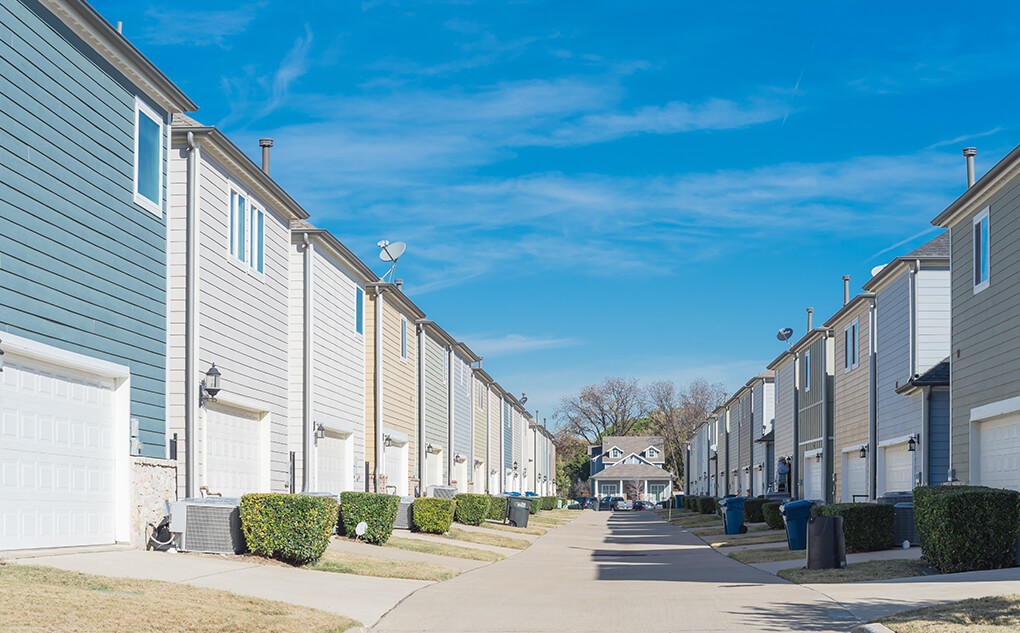As 1st quarter multifamily REIT earnings calls wind down, a few themes stood out among the larger players. In general, 1st quarter results met or outpaced expectations, and a few REITs increased elements of their full-year guidance as a result. Still, most REITs prefer to analyze performance during the prime leasing season (around May to September) before altering their forward performance projections.
Job Growth Improving
The first major theme mentioned at the beginning of nearly every earnings call was an improvement in demand drivers – notably, job growth. The National Association of Business Economics, or NABE, increased its job growth estimate to 1.6 million new jobs in 2024, up from the prior estimate of 700,000 jobs. Job quality was mentioned as a factor to consider, however, as many of these new jobs may be part-time or lower paying. Still, improved employment has contributed to additional upside on near-term REIT performance expectations. RealPage, too, has slightly strengthened its forecast after 1st quarter in light of economic factors.
Renting Still More Affordable Than Buying
REITs agreed on the continued tailwind to multifamily demand that renting remains more affordable than buying in many markets nationwide. Interest rates remain high for would-be homeowners, for-sale stock is limited and home ownership remains out of reach for many. AvalonBay Communities, Inc. (AVB) reported that in their markets, it is, “more than $2,000 per month more expensive to own versus rent a home.” Likewise, Essex Property Trust, Inc. (ESS) stated, “the median cost of owning a home is 2.5 times more expensive than renting in our markets.” Similarly, a 2023 study by The Center for Generational Kinetics for RealPage found that 73% of American renters say they cannot afford to buy a house in the area where they currently rent.
Supporting this trend is the fact that move-outs due to home purchase were at historically low levels as of 1st quarter. AVB reported this rate around 7%, down from the long-term average of more like 17%. For ESS, that rate was down to 5% from around 12% historically. Equity Residential (EQR) reported its rate of loss to homeownership shrank to 7.8%. Also reporting historically low rates of move-outs to home purchase were MAA (12.9%) and UQR (10%).
Bifurcation in Rent Performance
Supply continued to drive a bifurcation in rent performance, among major multifamily REITs. Low supply in coastal markets supported rent growth, while high-supply Sun Belt operators achieved limited rent change and, in turn, were more likely to employ targeted concessions to promote lease-up absorption. RealPage data continues to support this phenomenon as well.
Charlotte and Austin were mentioned as concession hot spots ranging from about one month free to nearly five months free in certain hard-hit Austin submarkets. Concessions were not limited to the Sun Belt however, as the turbulence in high-tech employment affected pricing stability on the West Coast. That appeared to have largely moderated in 1st quarter as coastal REITs report significant quarter-over-quarter improvement, especially in Seattle and Southern California.
Looking ahead, permitting has slowed in the Sun Belt and across REIT expansion markets, and REITs expected to see rent growth return as demand drivers remained solid under moderating supply. New supply is expected to remain manageable on the coastal markets as well. ESS captured this sentiment as part of its California strategy: the “lengthy and costly entitlement process effectively deters housing supply,” in many West Coast and especially California markets. To this point, ESS reports, “total housing permits as a percentage of stock continues to remain well below 1%,” in their California markets.







